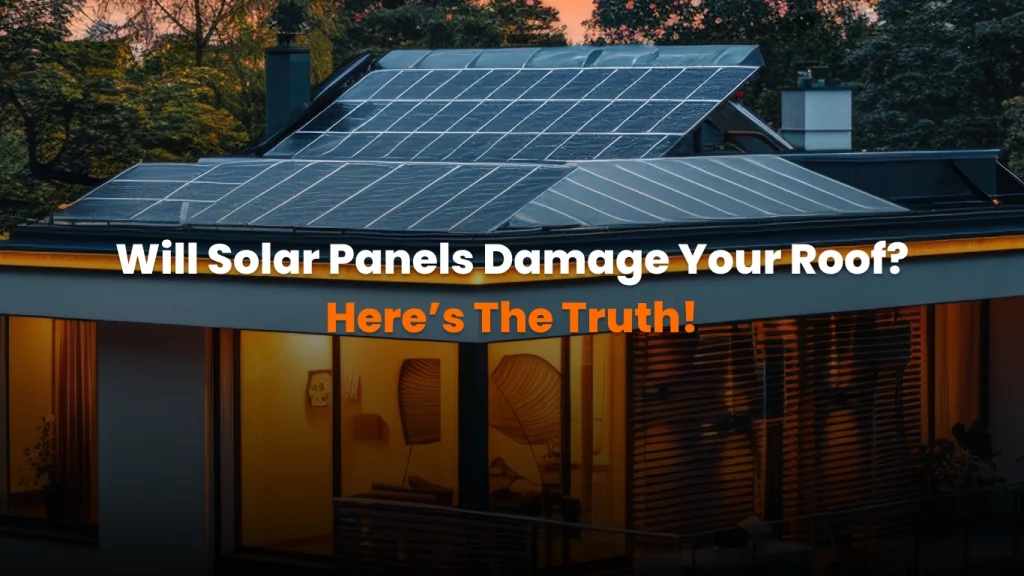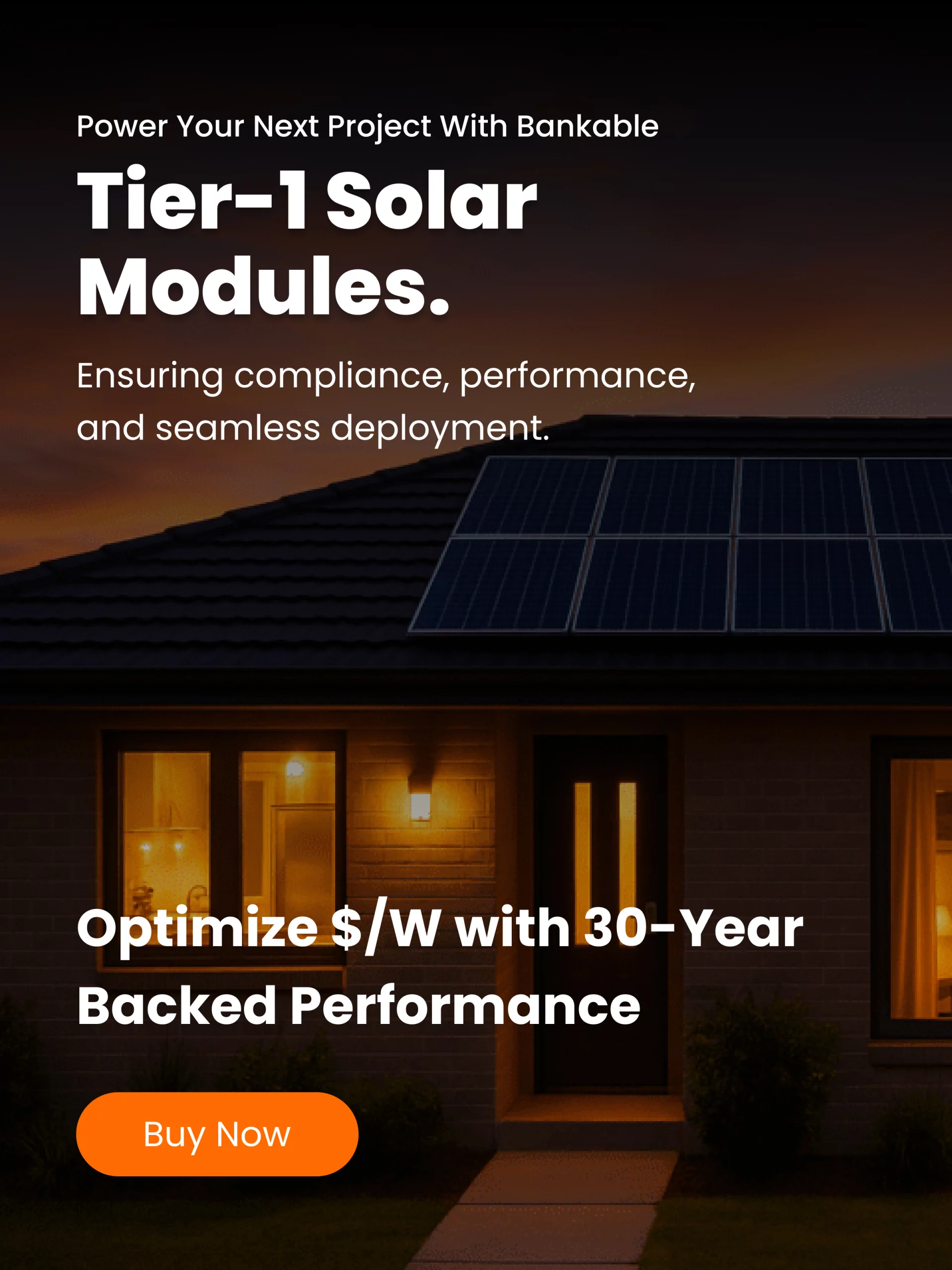Installing solar panels is one of the most popular ways homeowners are reducing their energy bills and lowering their environmental footprint. But before committing to solar, a common concern often arises: will solar panels damage my roof?
The short answer is no, solar panels generally do not damage a roof if the roof is in good condition and the installation is carried out by qualified professionals. In fact, under certain conditions, solar panels may actually help protect your roof and extend its life. Still, there are risks to be aware of, especially when it comes to poor installation or older roofing materials.
Let’s explore the details so you can make an informed decision.
Understanding the weight of solar panels
One of the first worries homeowners have is whether solar panels are too heavy for their roof to support. Residential solar panels typically weigh between 40 and 50 pounds each, which comes out to roughly 5 to 6 pounds per square foot of roof area. To put this into perspective, most roofs in the United States are designed to handle snow loads of up to 40 pounds per square foot, far heavier than solar equipment.
That means for the majority of homes with structurally sound roofs, weight isn’t a problem. However, if your roof is old, weakened, or nearing the end of its expected lifespan, adding solar panels without addressing these issues could lead to trouble. Possible risks include sagging, roof leaks, or in worst cases, structural damage.
This is why experts strongly recommend a pre-installation roof inspection. A roofing professional or structural engineer can identify weaknesses in your roof before panels are mounted. Addressing these concerns early, whether by reinforcing certain areas or replacing old roofing, can save thousands of dollars and prevent unnecessary headaches down the road.
The risks of poor installation
While solar panels themselves don’t usually harm a roof, poor installation practices can. This is where homeowners need to be especially cautious.
Some of the most common risks include:
- Leaks: When installers drill into shingles or tiles to mount racking, improperly sealed penetrations can allow water to seep in. Failed flashing or low-quality sealants increase this risk.
- Shingle and tile damage: Heavy foot traffic during installation can crack brittle shingles or break clay tiles.
- Wind uplift: Panels that aren’t anchored securely can loosen during high winds, creating hazards for your roof and the panels themselves.
- Voided warranties: Many roofing material manufacturers require licensed professionals for any modifications. If solar panels are installed by an unqualified team, your existing roof warranty may no longer be valid.
A cautionary tale comes from a 2019 lawsuit filed by Walmart against Tesla, after a series of fires at Walmart stores were linked to allegedly poor solar installations. While rare, these incidents highlight the importance of hiring certified, experienced solar installers who understand both electrical and roofing best practices.
Solar panels may actually protect your roof
Here’s something many homeowners don’t expect: in some cases, solar panels can help your roof last longer.
- UV protection: By shading the roof, panels block harsh ultraviolet (UV) rays that degrade shingles over time.
- Temperature control: Studies have shown that shaded areas beneath solar panels can be 5–35°F cooler than exposed roofing. Lower temperatures reduce thermal stress that often leads to cracking and warping.
- Weather shield: Panels act as a physical barrier against rain, hail, and wind, taking the brunt of the weather so your shingles don’t have to.
In this way, solar systems can serve as a protective layer for your home, extending the useful life of your roof.
What experts recommend before going solar
If you want to minimize risks and maximize the protective benefits of solar panels, industry experts recommend taking a few key steps:
- Inspect before installing: If your roof is more than 15–20 years old, consider replacing it before adding solar, even if it looks fine. Panels last 25+ years, so ideally, you want the roof’s life expectancy to match.
- Hire reputable installers: Check for certifications, insurance, and strong customer reviews. A qualified installer should be transparent about their process and warranty coverage.
- Insist on quality flashing and sealants: These components keep penetrations watertight. They should be rated for your local climate and applied properly.
- Schedule periodic inspections: Every couple of years, have your system and roof checked for leaks, debris buildup, or loose mounts.
- Protect against wildlife: Birds and squirrels love to nest under panels, which can lead to chewed wires and roofing damage. Installing mesh barriers around the panel edges helps prevent this.
By taking these precautions, you can ensure your solar system benefits your home instead of creating costly repairs.
Real-world experience and data
So, how often do solar panels actually damage roofs? The data is reassuring.
Industry studies show that in 95% of residential installations, roofs remain undamaged as long as they are structurally sound and installers follow standard practices. In the small percentage of cases where problems occur, the root cause is usually pre-existing roof issues or substandard installation, not the solar panels themselves.
Additionally, many solar companies now include workmanship warranties that cover roof penetrations, adding another layer of protection for homeowners.
Final thoughts: balancing risk and reward
So, do solar panels damage your roof? The evidence shows that, in most cases, the answer is no. In fact, panels can actually help preserve your roof by shielding it from UV rays and harsh weather. The real risks come from installing panels on an already compromised roof or cutting corners with inexperienced installers.
The good news is that with a solid roof, proper installation, and occasional maintenance, you can safely enjoy solar power without worrying about roof damage. Instead of being a liability, solar panels often end up being an investment that not only saves money on electricity but also provides long-term protection for your home.
If you’re weighing the odds, the scales tip strongly in favor of solar, as long as you take the time to prepare your roof and choose the right installation team.




